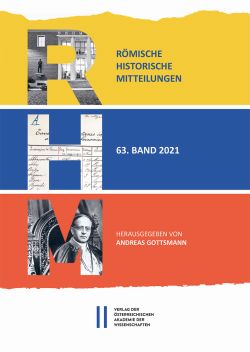
Römische Historische Mitteilungen 63/2021, pp. 69-116, 2021/11/02
The coronation of Emperor Frederick III as King of Lombardy-Veneto and his coronation as Holy Roman Emperor on March 19th 1452 must be seen as two separate events in terms of preparation and procedure. However, they were perceived by contemporaries as being part of the same event. Not only did Frederick III’s imperial coronation mark the end of a tradition, but – due to the fact that this event is regarded as being closely interwoven with the Lombardy coronation – it definitely paved the way for something new. In fact, during the ceremony of 1452 Frederick III was given the title of canon of both St. Peter’s Basilica and of the Lateran. The golden rose was conferred not only because the ceremony had been restructured but also because it took place on Laetare Sunday in 1452. A medieval coronation ceremony can be understood only if it is seen in terms of an ensemble of interlinked events in which the act of handing over the imperial insignia plays a very important role. The service as strator, which Frederik III performed for the pope on his way between St. Peter’s Cathedral and Castel Sant’Angelo, was intended to demonstrate the emperor’s newly won dignity. Particularly important is also the march of the emperor, wearing his crown, through Rome to the Lateran’s Church, to which little attention has been paid so far. In a special way, the imperial coronation of Frederick III in 1452 can be seen as an example of how history interprets an event in a different way and how, over time, the event and the history of the interpretation of this event have merged together seamlessly.